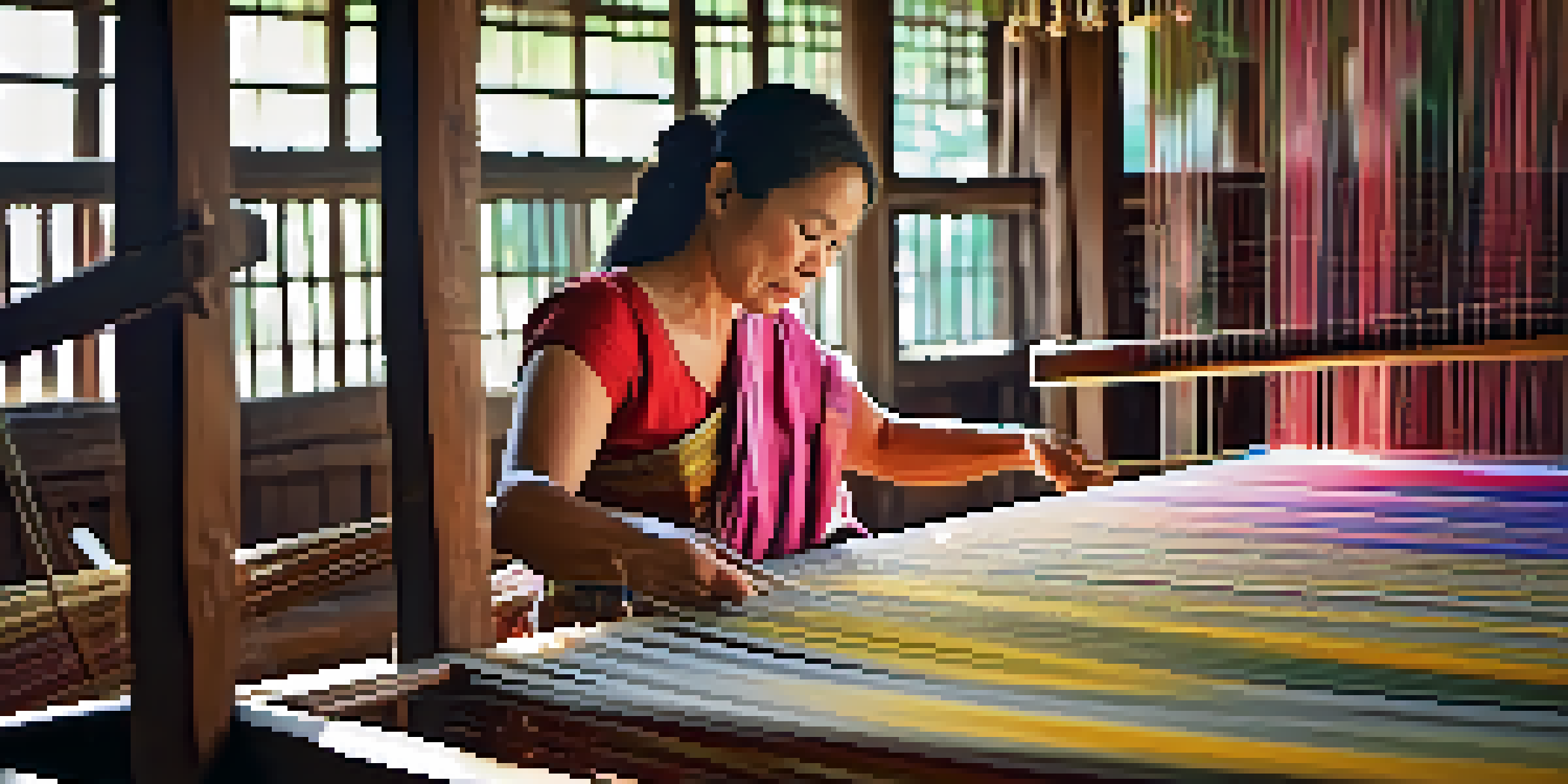The Craftsmanship of Thai Silk Weaving in Regional Art Styles

Introduction to Thai Silk Weaving and Its Importance
Thai silk weaving is not just a craft; it's a cultural heritage that reflects Thailand's rich history. The meticulous process of transforming silkworm cocoons into beautiful fabric has been passed down through generations. This art form is deeply intertwined with the identity of various Thai regions, showcasing unique styles and techniques. Understanding the craftsmanship behind Thai silk helps appreciate the artistry and dedication involved in each piece.
The History of Thai Silk Weaving
Thai silk weaving dates back centuries, with roots in ancient traditions that link to the Silk Road. Initially, silk was a luxury item reserved for royalty and wealthy families, symbolizing status and elegance. As time progressed, this craft evolved, becoming more accessible while maintaining its artistic integrity. Today, it serves as a testament to Thailand's cultural resilience and creativity, preserving historical narratives through textiles.
Cultural Heritage of Thai Silk
Thai silk weaving is a vital cultural heritage that reflects Thailand's rich history and regional identities.
Regional Variations in Thai Silk Weaving Styles
Different regions of Thailand showcase distinct silk weaving styles, each with its own story and significance. For example, the northeastern region, known as Isaan, is famous for its vibrant colors and intricate patterns, often reflecting local folklore. In contrast, the central region emphasizes finer textures and subtle hues, catering to a more urban aesthetic. These regional differences highlight the diverse cultural influences and traditions that shape Thai silk.
The Weaving Process: A Blend of Tradition and Skill
The weaving process itself is a labor of love that requires patience and precision. It begins with the careful cultivation of silkworms, followed by harvesting and processing the cocoons. Weavers then use traditional wooden looms, employing techniques that have remained unchanged for generations. This intricate process not only results in beautiful textiles but also fosters a deep connection between the artisan and their craft.
Economic Importance of Weaving
The craft significantly impacts the local economy by providing livelihoods and promoting fair trade practices.
The Role of Natural Dyes in Thai Silk
Natural dyes play a crucial role in the coloration of Thai silk, adding depth and character to each piece. Artisans often source these dyes from local plants, fruits, and minerals, embracing sustainable practices. For instance, indigo plants yield rich blue hues, while turmeric produces vibrant yellows. This commitment to using natural materials resonates with the growing appreciation for eco-friendly fashion.
Modern Influences on Thai Silk Weaving
As the world of fashion evolves, Thai silk weaving is also adapting to modern trends. Contemporary designers are incorporating traditional techniques with innovative designs, expanding the appeal of silk beyond traditional garments. This fusion of old and new not only broadens the market for Thai silk but also introduces younger generations to their cultural heritage. It's a beautiful example of how tradition can thrive in a modern context.
Modern Adaptations in Silk Weaving
Contemporary designers are blending traditional silk weaving techniques with modern styles, attracting new audiences.
The Economic Impact of Thai Silk Weaving
Thai silk weaving significantly contributes to the local economy, providing livelihoods for many families. Artisans often work in community cooperatives, promoting fair trade practices and empowering women. As the demand for authentic Thai silk grows, these communities benefit from increased visibility and support. This economic impact reinforces the importance of preserving this craft for future generations.
Conclusion: Celebrating Thai Silk Weaving
Thai silk weaving is more than just a craft; it is a living legacy that embodies the spirit of Thailand. By understanding its history, regional styles, and modern adaptations, we can appreciate the artistry that goes into each piece. Supporting this craft not only honors the artisans and their skills but also helps preserve a vital part of cultural heritage. As we celebrate Thai silk, we also celebrate the stories and traditions woven into each thread.